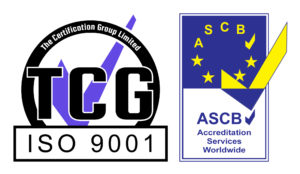Screed Vertical Control Joint
Screed Vertical Control Joints
I am Andy Parkin Managing Director of the Multi-Award-Winning Speed Screed and today I would like to talk about Vertical Control Joints in floor screed.
Bay Sizes
Screed vertical control joints are essential in projects once the bay size exceeds the screed manufacturer guidelines. The ratio of the bay needs also needs to be factored in. If there is more than a 2:1 ratio – the length and breadth of the bay, then the base size needs to be reduced. The more elongated the bay, the smaller the square meterage is.
To give a perspective on maximum bay sizes, traditional sand and cement would be a maximum of 40 square metres, and a calcium sulphate screed would be 300 square metres when including underfloor heating.
Don’t forget to factor in the base size ratio and any restraints within the screed, such as kitchen islands and re-entrant corners. The base sizes will need to be reduced to factor in these elements.
An example of where a screed vertical control joint may be used would be a typical house with lots of rooms, each leading into the next. You have a large piece of screed on either side of the doorway that narrows into the opening. The doorway becomes a classic area to crack due to the stresses placed upon the screed.
Why does screed crack?
A screed will only move under two conditions.
- During the drying phase, when the screed shrinks. This type of stress can cause shrinkage cracking. Once dry, the screed becomes inert and never moves by itself again.
- The only other time a screed will move is through external stresses. Examples of this are a thermal movement with the underfloor heating present (expanding and contracting), structural movement from the building, and loading of the screed.
When the screed shrinks in the drying phase, this movement needs to be controlled to minimise the possibility of cracking. One method would be to apply a vertical control joint to reduce base sizes.
The screed vertical control joint is very popular when underfloor heating is present in the screed. The screed will go through cycles of expansion and contraction through thermal movement. If the bay size is too big, stress will build up, and the screed will look to release the tension at the weakest point, resulting in the screed cracking.
The movement is managed with the screed vertical control joint due to its flexible ether foam core, allowing the screed to expand and contract.
When using underfloor heating zones, it may be desirable to heat different rooms at different temperatures. The use of a vertical control joint is essential to achieve this.
The joint is a barrier to heat migration from one room to another, thus ensuring that two zones can be controlled independently.
Without a screed vertical control joint, rooms operating at different temperatures increase the risk of differential thermal cracking between the two zones. If one side of the screed expands more significantly than the other side, the stress-induced can cause the screed to crack down the middle.
One further reason for using a screed vertical control joint might be the need for a movement joint within the screed. This would be to factor movement within the building and mirror the joint in the substrate.
We would be delighted to help further with any questions you may have. Don’t hesitate to get in touch with us.
Our Accreditations
About Speed Screed
Speed Screed Limited was founded on the key principle of providing first-class customer service. It has since built itself an impressive reputation for delivering high-quality projects across the United Kingdom Floor Screed.
The company’s success is built on its belief in quality work, attention to detail, on-time completion, strong working partnerships and the recruitment of top-level staff. about us >








